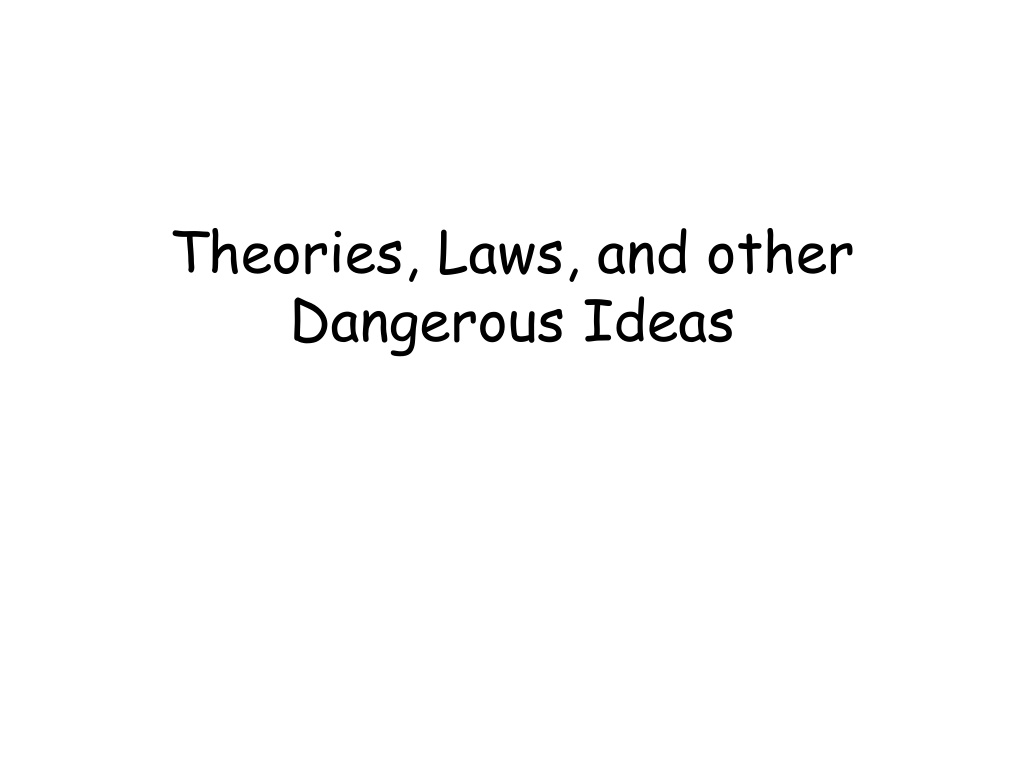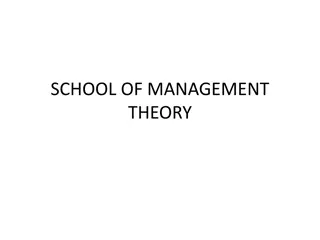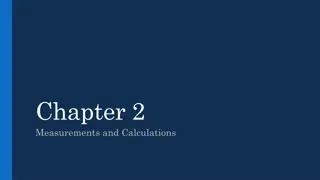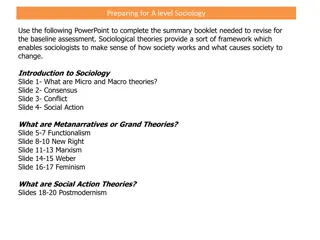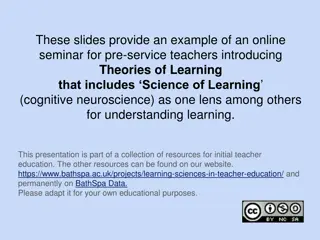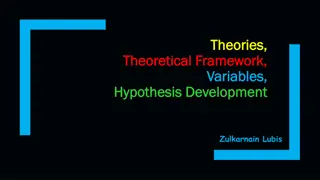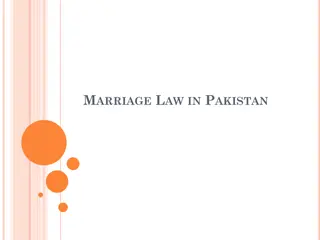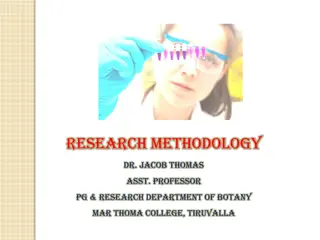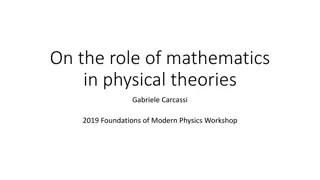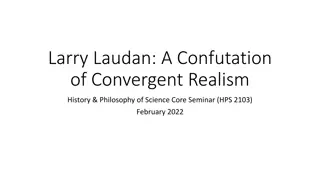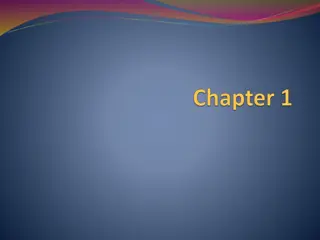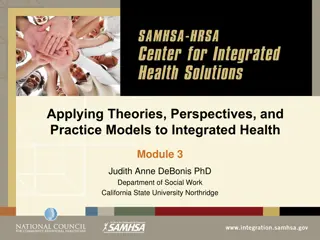Understanding Scientific Concepts: Theories, Laws, and More
Explore the interconnected concepts of scientific theories and laws, including examples such as Newton's 2nd Law of Motion, the Theory of Plate Tectonics, and more. Delve into the definitions of facts, hypotheses, theories, and laws to enhance your understanding of the scientific world.
Download Presentation

Please find below an Image/Link to download the presentation.
The content on the website is provided AS IS for your information and personal use only. It may not be sold, licensed, or shared on other websites without obtaining consent from the author. Download presentation by click this link. If you encounter any issues during the download, it is possible that the publisher has removed the file from their server.
E N D
Presentation Transcript
Theories, Laws, and other Dangerous Ideas
Theories Laws How are these four concepts related to each other? Facts Hypotheses
List examples of scientific theories and laws . Theories Laws
Theories Laws Newton s 2nd Law of Motion: F=ma Describes the relationship between force, mass, and acceleration. Theory of Plate Tectonics: Earth s crust is divided into plates that move. Explains why earthquakes and volcanoes occur in certain zones. Kinetic Moleclar Theory: Matter consists of tiny particles in constant motion, whose speed is proportional to the absolute temperature. Explains gas laws. Ideal Gas Law: PV=nRT Describes the relationship between pressure, volume, moles, and temperature of a gas. The law of independent assortment: Describes the principle that traits are passed on to offspring independent of each other Germ Theory: Contagious diseases are caused by invisible microorganisms. Explains cause of many illnesses. Atomic Theory: All matter is composed of elements made from indestructible particles called atoms. Explains why matter is conserved in chemical reactions. Law of Superposition: Describes the general principle that in undeformed layers of rock, the oldest rock will be at the bottom.
Theories Laws Newton s 2nd Law of Motion: F=ma Describes the relationship between force, mass, and acceleration. Theory of Plate Tectonics: Earth s crust is divided into plates that move. Explains why earthquakes and volcanoes occur in certain zones. Kinetic Molecular Theory: Matter consists of tiny particles in constant motion, whose speed is proportional to the absolute temperature. Explains gas laws. Ideal Gas Law: PV=nRT Describes the relationship between pressure, volume, moles, and temperature of a gas. The law of independent assortment: Describes the principle that traits are passed on to offspring independent of each other Germ Theory: Contagious diseases are caused by invisible microorganisms. Explains cause of many illnesses. Atomic Theory: All matter is composed of elements made from indestructible particles called atoms. Explains why matter is conserved in chemical reactions. Law of Superposition: Describes the general principle that in undeformed layers of rock, the oldest rock will be at the bottom.
Now Define the Terms Fact- Hypothesis- Theory- Law-
Scientific Fact: In science fact can only mean confirmed to such a degree that it would be perverse to withhold provisional consent . Stephen J. Gould Scientific Hypothesis: 1. A proposed answer to a research question 2. A tentative explanation for an observation or phenomena that can be tested through experimentation.
Scientific Theory: A general principle supported by a substantial body of evidence offered to provide an explanation of observed facts and as a basis for future discussion or investigation. Lincoln, Boxshall, and Clark (1990)
Scientific Theory: A general principle supported by a substantial body of evidence offered to provide an explanation of observed facts and as a basis for future discussion or investigation. Lincoln, Boxshall, and Clark (1990) Scientific Law: A scientific law is a description of a natural relationship or principle, often expressed in mathematical terms.
Is there a hierarchy among the four original concepts? Facts Theories Laws Hypotheses
Speculation Absolute Truth
Speculation Absolute Truth
Potential Progression of Scientific Ideas THEORY THEORY L A W L A W HYPOTHESIS HYPOTHESIS FACTS FACTS
Potential Progression of Scientific Ideas THEORY THEORY L A W L A W Explanatory principal Concise, descriptive principal Based more on inference Based more on observation HYPOTHESIS HYPOTHESIS Keep in mind that most hypotheses support EXISTING theories/laws FACTS FACTS
What makes these ideas dangerous (when applied to science):
What makes these ideas dangerous (when applied to science): Facts are indisputable Hypotheses are educated guesses Theories are unsubstantiated ideas Laws are proven theories
What makes these ideas dangerous (when applied to science): Facts are indisputable Hypotheses are educated guesses Theories are unsubstantiated ideas Laws are proven theories
